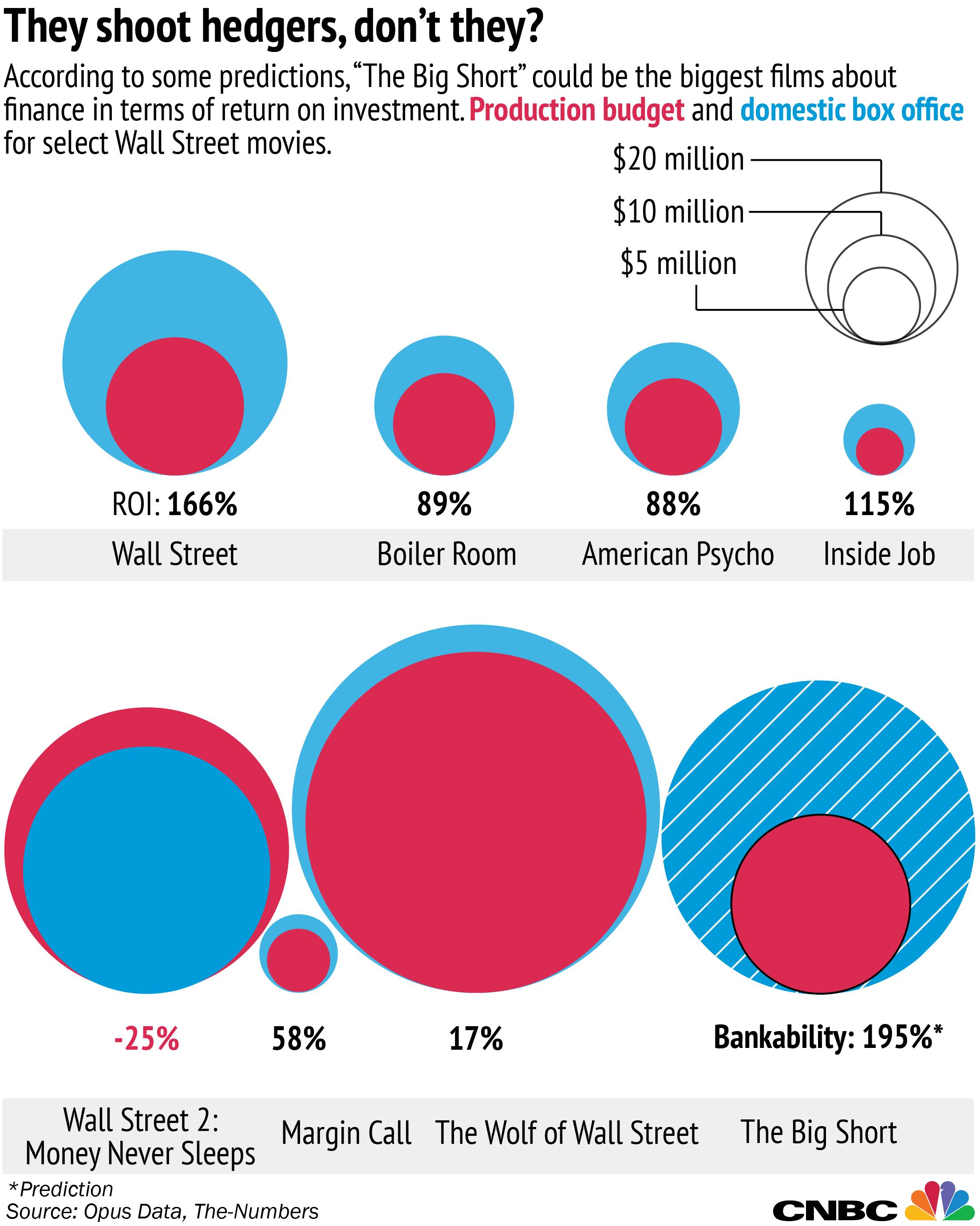Wall Street-based movie "The Big Short" has a lot of talk about collateralized debt obligations, so we decided to turn the movie itself into one, slicing and dicing it into its component parts. Where's the real value in the movie?
The movie is set for a limited release this weekend, with a wider national opening Dec. 23. Just Thursday, the movie earned four Golden Globe nominations. A big part of the plot relates to CDOs. That's a financial strategy to take an asset, slice and repackage it into smaller components, so that each one of those has its own tradeable value.
What if we told you that Brad Pitt's value to the movie was $8.8 million? That's his CDO "slice" of the film.








